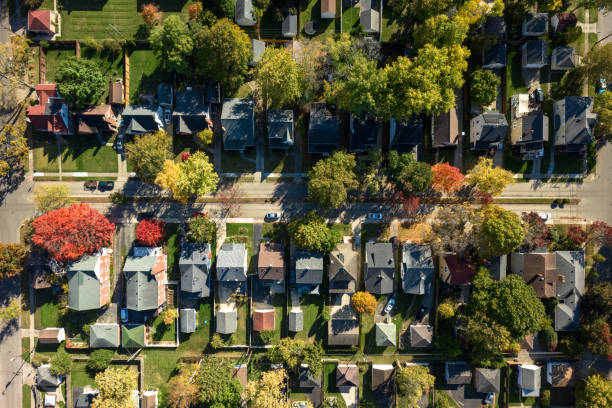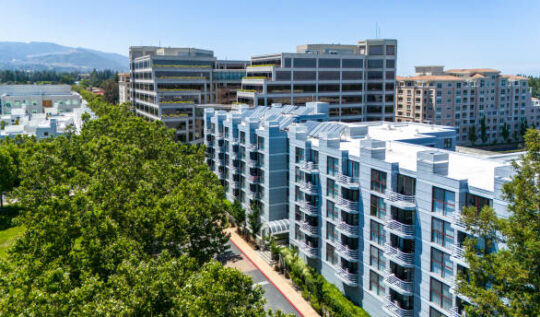Eight Detached ADUs on Multifamily Lots: SB 1211 Explained
California has been trying to fix its housing shortage for years. But despite dozens of new laws, many families still can’t find homes they can afford. At the same time, thousands of apartment buildings have large backyards, driveways, or parking lots that sit unused. What if those spaces could become housing?
Senate Bill 1211 (SB 1211) makes that possible. The new law gives owners of multifamily buildings the right to build up to eight detached Accessory Dwelling Units (ADUs) on their lot. These small homes can be added without removing or converting existing rental units.
This guide explains what SB 1211 allows, how it works, and why it matters for landlords, renters, and anyone interested in growing California’s housing supply—one backyard at a time.
Table of Contents
ToggleWhat Is SB 1211 and What Problem Is It Trying to Solve?
SB 1211 is a 2024 California law that expands the use of detached ADUs. It applies only to lots with existing multifamily buildings—like duplexes, triplexes, or apartment complexes.
The problem it addresses is simple: many of these buildings sit on large lots, but local zoning often blocks owners from building more units. SB 1211 overrides these local rules and lets owners add up to eight detached ADUs as long as there’s enough space and access for fire, safety, and utilities.
The state passed this law to create more housing without displacing anyone. It’s a part of a larger push toward what planners call “gentle density”—adding more homes in existing neighborhoods without the need for high-rises or major construction projects.
How to Use SB 1211 to Your Advantage
Step 1: Walk Your Property
Bring in a professional to check access, space, and site feasibility for detached ADUs.
Step 2: Draft a Site Plan
Create a basic layout showing ADU placement, paths, utilities, and access zones.
Step 3: Talk to Planners
Ask for a pre-submittal review. Clarify fire safety, utility, and local design standards.
Step 4: Run the Numbers
Estimate build costs, rental income, permit fees, and long-term ROI with your consultant.
Step 5: Assemble Your Team
Hire a designer or builder with experience in multifamily ADU projects under SB 1211.
SB 1211 – What the Law Actually Allows
This law gives eligible property owners a straightforward path to building new detached homes. Here’s what it allows and how it differs from past ADU rules.
What SB 1211 Allows:
You can build up to eight detached ADUs on any lot with an existing multifamily building.
The new units must be detached—not garage conversions or attached additions.
You don’t have to remove or convert any current rental units.
The project must follow basic safety, utility, and building code standards.
Cities must approve qualifying projects through a ministerial process, meaning no public hearings or long delays.
This law builds on California’s earlier ADU reforms but focuses specifically on backyard infill for apartments and duplexes.
Table: What You Need to Build ADUs Under SB 1211
| Requirement | Details |
|---|---|
| Eligible Property | Lot must have an existing multifamily building |
| Maximum Number of Units | Up to 8 detached ADUs |
| Type of Units Allowed | Detached new construction only |
| Permit Process | Ministerial (fast-track, no public hearing required) |
| Space and Access Rules | Must allow fire access, utility hookups, and meet safety codes |
| No Displacement Required | Existing apartments must remain; no demolitions allowed |
How SB 1211 Fits into California’s Broader ADU Reform Strategy
California has passed many housing laws in recent years to fight its housing shortage. SB 1211 builds on this momentum by focusing on low-impact infill housing—homes that fit into existing neighborhoods without massive redevelopment.
Earlier ADU laws helped single-family homeowners build backyard units. But SB 1211 shifts that focus to multifamily properties—places where extra land already exists but is often overlooked.
Here’s how SB 1211 fits into California’s ADU timeline:
SB 13 (2020): Removed fees and made ADUs easier to permit for homeowners
AB 68 & AB 881 (2020): Allowed ADUs and Junior ADUs on most single-family lots
SB 9 (2021): Let homeowners split lots and build up to 4 units on single-family parcels
AB 1033 (2023): Let ADUs be sold as condominiums in some cities
SB 1211 (2024): Allows up to 8 detached ADUs on multifamily lots
This law doesn’t stand alone. It works alongside other policies aimed at reducing vehicle miles, encouraging walkable neighborhoods, and helping cities meet their housing goals without displacing current renters.
If your lot qualifies, SB 1211 could be one of the most flexible tools available to help you increase rental supply and boost your property’s value at the same time.
What Property Owners Need to Know Before Building 8 ADUs

If you’re thinking about using SB 1211, the first question to ask is: Can your lot actually support eight new detached units?
While the law creates a right to build, it also sets some limits. Space, access, utilities, and design all matter. Here are the most important things to consider.
1. Lot Size and Layout
You’ll need enough yard area or unused space for the new units. Many older apartments have long backyards or oversized side lots that qualify.
Watch for:
Open areas behind or beside existing structures
Wide driveways or former parking spaces
Gentle slopes or flat pads that don’t need grading
2. Fire Access and Emergency Standards
Even with ministerial approval, fire departments can deny or restrict ADU placement if access roads are too narrow, if hydrants are too far, or if emergency vehicles can’t reach the rear of the lot.
Work with a professional to:
Check fire lane width
Measure distance to the nearest hydrant
Plan for fire sprinklers or alternate safety measures if needed
3. Utility Hookups and Infrastructure
Your property may need upgraded water, sewer, or electric lines. Many local agencies now allow shared connections, but older infrastructure might need costly updates.
Plan ahead for:
Shared vs. separate meters
Trenching costs for utility extensions
Electrical panel upgrades
How to Build Detached ADUs Under SB 1211: Step-by-Step Overview
The process for adding up to eight detached ADUs under SB 1211 is faster than traditional construction, but it still requires careful planning.
Here’s a simplified breakdown of what the development process looks like:
Step 1: Site Evaluation
Start by walking your property with a contractor, architect, or ADU consultant. Identify usable space and check for slope, drainage, and access.
Questions to ask:
Do I have enough yard space for 8 units?
Can fire trucks access the rear of the lot?
Are there any easements or site constraints?
Step 2: Design and Layout
Work with a licensed professional to draw site plans. Consider placing smaller ADUs toward the back, or using a mix of one-bedroom and studio layouts to maximize the number of homes you can fit.
Good design can help:
Avoid tree removal or grading
Protect existing tenants’ privacy
Comply with height and bulk limits
Step 3: Permitting
Submit your plans to the local building department. Thanks to SB 1211, cities must use a ministerial review process, meaning they can’t require public hearings or use discretionary delays.
You may still need to:
Comply with building code requirements
Complete a fire safety plan
Get utility clearances and impact fees handled
Step 4: Construction and Inspection
Once approved, construction can begin. Most projects take 6 to 12 months, depending on size, contractor availability, and site conditions.
Your project will be inspected like any other residential build:
Foundation, framing, and electrical inspections
Final walk-through before occupancy
Issuance of separate addresses and utility meters, if applicable
Table: Key Community Benefits of SB 1211
| Benefit | Why It Matters |
|---|---|
| More Affordable Rentals | Smaller detached ADUs offer naturally lower rents than new apartments |
| No Tenant Displacement | Existing units remain untouched—no demolitions or evictions required |
| Fits Neighborhood Scale | Gentle density adds housing without changing neighborhood character |
| Supports Family Flexibility | Multigenerational households can live closer together |
| Encourages Transit Use | Builds housing in walkable, transit-accessible locations |
| Aligns With Climate Goals | Reduces car use, emissions, and sprawl by building within existing communities |
What Are the Limits and Challenges of SB 1211?
While SB 1211 is a big step forward, it doesn’t mean every multifamily property in California will suddenly be covered with new ADUs. There are practical and legal limits that property owners need to understand before moving forward.
Let’s break them down clearly.
Not Every Lot Will Qualify
Even though the law applies statewide, some lots just won’t have the space or access required to safely add detached housing.
Some common reasons a lot may not qualify:
Too little open yard or side-lot space
Irregular lot shapes or steep slopes
Existing structures or trees blocking buildable areas
Shared driveways or narrow access lanes
If your property is fully built out, or already hosts 2 detached ADUs under prior law, you may need to wait until further updates or work with fewer than 8 units.
Fire Safety and Emergency Access May Be a Deal Breaker
SB 1211 allows new units “by right,” but it doesn’t override fire or life safety standards. If emergency vehicles can’t reach the back of your property—or if fire lanes are too narrow—your local fire marshal can stop the project.
Common fire access issues include:
No alley access or rear easement
Driveways too narrow for fire engines (typically under 20 feet)
No room to turn or stage fire vehicles
Distance from a hydrant exceeds allowed range
Some workarounds may be available (e.g. sprinklers or fire-resistant construction), but these add cost and delay.
Infrastructure and Construction Costs Can Be High
Just because you can build 8 units doesn’t mean you’ll want to—or be able to afford it. Detached ADUs require site grading, new foundations, utility hookups, and skilled labor. For small landlords or mom-and-pop owners, that’s a big investment.

Key cost drivers include:
Utility extensions (especially sewer or electric)
Trenching or digging near existing structures
Permit fees and plan review costs
Labor shortages or rising material prices
Many owners may choose to build 2–4 units instead of 8, depending on budget and return-on-investment projections.
Local Resistance Is Still a Real Thing
SB 1211 limits what cities can say no to—but it doesn’t guarantee a smooth process. Some cities may try to slow-roll approvals or use “design review” to impose delays.
You may also face:
Neighborhood pushback from renters or owners who fear “overbuilding”
Delays in utility service agreements
Backlogged city planning offices due to staff shortages
That’s why it’s so important to work with experienced permit consultants, architects, and builders who know how to move your project through the system quickly.
How SB 1211 Helps Renters, Working Families, and Communities
SB 1211 isn’t just about giving landlords new rights. It’s also about creating housing options for people who are often left out of the market—especially renters, single parents, seniors, and low-income households.
By unlocking small, detached homes on existing lots, the law helps add affordable rental units without building massive towers or displacing current tenants.
Here’s why this matters.
Adds Lower-Cost Rentals Where People Already Live
Detached ADUs are often smaller than traditional apartments. That means lower rents—especially when built in backyard or side-lot space that would otherwise go unused.
These units help:
Seniors age in place
Adult children stay near family
Teachers, nurses, and service workers find housing near jobs
Because the units are on lots that already have buildings and utilities, they’re usually cheaper to develop than new construction on raw land.
Expands Housing Choice Without Gentrification
Unlike large apartment complexes that may require demolition or rezoning, SB 1211 doesn’t remove existing homes. It adds new units without pushing anyone out.
That’s especially important in:
Historically redlined or underinvested neighborhoods
Transit-rich areas where renters are at risk of displacement
Suburban communities resisting large-scale development
This approach—known as “gentle infill”—helps cities grow without forcing existing residents to leave.
Promotes Sustainable, Transit-Friendly Development
Because SB 1211 targets multifamily lots that already exist in urban and suburban areas, it encourages development close to jobs, schools, and transit.
That helps California reduce:
Vehicle miles traveled (VMT)
Greenhouse gas emissions
Traffic congestion and sprawl
The result is more homes near opportunity—without stretching infrastructure or harming the environment.
Table: Key Community Benefits of SB 1211
| Benefit | Why It Matters |
|---|---|
| More Affordable Rentals | Smaller detached ADUs offer naturally lower rents than new apartments |
| No Tenant Displacement | Existing units remain untouched—no demolitions or evictions required |
| Fits Neighborhood Scale | Gentle density adds housing without changing neighborhood character |
| Supports Family Flexibility | Multigenerational households can live closer together |
| Encourages Transit Use | Builds housing in walkable, transit-accessible locations |
| Aligns With Climate Goals | Reduces car use, emissions, and sprawl by building within existing communities |
How to Use SB 1211 to Your Advantage: A Guide for Landlords and Developers
If you own a multifamily property in California, SB 1211 gives you one of the most powerful tools in the state’s housing toolkit. But using it the right way takes planning, coordination, and clear strategy.
Whether you own a duplex in San Diego or a small apartment building in the San Fernando Valley, here’s how to make the most of SB 1211.
Step 1: Walk Your Property with a Professional
Start with a site visit. Bring in an architect, contractor, or ADU consultant to review your lot layout. You’ll want to check:
How much open space is available
Whether driveways or fire lanes meet access standards
If there are any utility, drainage, or easement issues
A quick walkthrough can help you understand how many ADUs are possible—and what challenges you may face.
Step 2: Get a Site Plan and Preliminary Layout
Once you know what’s possible, work with a professional to draft a preliminary site plan. This doesn’t need to be your final design, but it should show:
ADU placement (side yard, rear yard, etc.)
Proposed setbacks, unit size, and paths of travel
Utility connections and access points
A rough plan gives you a head start when meeting with planners or engineers.
Step 3: Connect with Local Planners Early
Even though SB 1211 requires ministerial approval, your local planning office still reviews the application. Get ahead of the process by:
Asking for pre-submittal meetings
Reviewing local ADU design guidelines (some cities have them)
Confirming utility capacity and connection options
Building a friendly relationship with staff can help your application move faster—and avoid surprises later.
Step 4: Run the Numbers Before You Build
Before you break ground, it’s smart to run a basic financial analysis. Ask your architect or ADU builder to estimate:
Construction costs (usually $180K–$300K per unit)
Permit and utility hookup fees
Rental income once completed
Long-term maintenance and insurance costs
You may also want to talk to a lender about financing options, especially if you’re planning to build more than 2–3 units.
Step 5: Choose the Right Delivery Team
Building 1 ADU is one thing. Building 6 to 8 is a full-scale project. You’ll need a team that can handle design, permitting, and construction.
Look for firms or consultants who specialize in:
Multifamily ADU developments
Design-build or modular ADU construction
Streamlined city permitting and code compliance
Working with the right team can save you time, money, and headaches—and help you unlock your lot’s full potential.
What to Watch as Cities Start Implementing SB 1211

SB 1211 is a statewide law, but cities and counties still play a major role in how it gets implemented. Property owners should expect differences in timelines, design standards, and staff capacity from one city to the next.
Here are a few key things to keep an eye on as local governments roll out this policy.
Local Design Standards May Still Apply
Although cities must allow ADUs under SB 1211, they can still enforce objective design standards—as long as they don’t make development impossible.
That means your new ADUs may still need to meet local rules for:
Building height and roof style
Landscaping, lighting, and fencing
Privacy between new and existing units
Setbacks from the rear and side property lines
These rules vary by city, and they can affect how many units you can build and where they go on the lot.
Tip: Ask your planner for the city’s ADU design checklist before submitting plans.
Not All Cities Are Ready for High-Volume ADU Permits
While SB 1211 took effect in 2024, many cities are still adjusting internal workflows and staff capacity. Some departments may be slow to respond or unclear on how to handle 6–8 unit ADU projects.
Possible issues:
Permit review timelines longer than 60 days
Inconsistent interpretations between planning and building departments
Delays in utility clearances or fire department sign-offs
This is why it’s helpful to work with ADU consultants or architects who’ve done projects in your city before.
Legal and Policy Changes Could Still Happen
SB 1211 is new—and lawmakers are already looking at possible updates based on feedback from cities and housing advocates.
Expect future conversations around:
Whether ADUs count toward a city’s Regional Housing Needs Allocation (RHNA)
How fees like school impact fees are calculated for detached ADUs
Whether affordability incentives (like density bonuses) can stack with SB 1211 rights
Even if you’re not building right away, staying up to date on new ADU policies can help you plan smarter and act faster when the time is right.
Conclusion – SB 1211 Is a Powerful New Tool for Housing in California
SB 1211 gives property owners, developers, and communities a new path to add housing without demolition, rezoning, or major construction delays. By allowing up to eight detached ADUs on multifamily lots, the law opens up thousands of sites across the state that were once off-limits.
Yes, there are design rules, site constraints, and costs to consider. But if you plan ahead—and work with experienced professionals—you can turn unused space into much-needed homes.
As California continues to address its housing crisis, gentle infill like this will play a key role in building more affordable, sustainable communities.
Let’s Talk About What’s Possible for Your Property
Our team at JDJ Consulting Group helps property owners, cities, and housing advocates make sense of evolving land use policies like SB 1211. If you’re thinking about building detached ADUs—or just want to know what your site can support—we’re here to help.
We’ll walk through your options, explain the permitting process, and connect you with the right partners for design, compliance, or construction.
Connect with us today at JDJ-Consulting.com or call +1 (818) 827‑6243. Let’s explore how SB 1211 can work for your goals—and your community.
Frequently Asked Questions
What does SB 1211 allow for multifamily properties?
SB 1211 allows owners of multifamily residential properties in California to build up to eight detached ADUs on a single lot, without removing existing units. These new homes must follow state building and safety codes and qualify through a ministerial (fast-track) approval process.
This policy builds on earlier ADU laws and applies to apartments, duplexes, and other multifamily lots.
Can every apartment complex build eight ADUs under SB 1211?
Not necessarily. SB 1211 gives the right to build up to eight ADUs, but the actual number depends on your site layout, fire access, and available yard space.
Some things that may limit your project:
Narrow driveways or blocked access
Lack of space in the rear or side yards
Local design standards that affect unit size and placement
Check with your city’s planning department or a qualified ADU consultant before designing your layout.
What is the difference between SB 1211 and older ADU laws?
Earlier laws, like AB 68 and SB 13, focused mostly on single-family homes and garage conversions. SB 1211 expands these rights by:
Allowing detached ADUs only (not internal conversions)
Applying to multifamily lots only
Permitting up to eight units per lot instead of two
Requiring cities to approve qualifying projects without discretionary review
It’s the most expansive ADU law for apartments passed to date.
How long does it take to permit detached ADUs under SB 1211?
Cities are required to process SB 1211 ADU applications through ministerial review, meaning no public hearing or city council vote. In most cases, approvals should be completed in 60 days or less if plans meet local code.
However, delays may happen due to:
Fire safety reviews
Utility sign-offs
Incomplete plan submittals
Work with experienced professionals to streamline the process.
Do I need to remove existing units or garages to build under SB 1211?
No. SB 1211 is designed to add new housing without removing existing units. You don’t need to demolish buildings or convert garages. Detached ADUs must be new construction placed in open space, such as:
Rear yards
Side yards
Former parking areas
This protects renters from displacement while adding density.
Can cities say no to SB 1211 ADU projects?
Cities must approve projects that meet the eligibility and safety standards of SB 1211. They can enforce objective design and building codes, but they cannot use subjective design rules or public opposition to deny a project.
That said, they can deny a proposal if:
Emergency access is unsafe
Units violate building code
Utilities cannot be connected safely
For specific requirements, check with your local planning department or visit HCD’s ADU resource hub.
Do ADUs under SB 1211 count toward a city’s affordable housing goals?
It depends. Some cities may count ADUs toward their Regional Housing Needs Allocation (RHNA) numbers, especially if they’re deed-restricted or rented at below-market rates.
Many ADUs built under SB 1211 will offer “naturally affordable” rents due to their size and design. For example:
Studios and one-bedrooms often rent below market
Small-footprint ADUs require fewer materials and lower operating costs
Units built behind existing buildings don’t require expensive land purchases
Check with your city to see how they report ADU units in their housing element.
How can JDJ Consulting Group help with SB 1211 projects?
JDJ Consulting Group works with property owners, developers, and planners across California to turn underused space into new housing. For SB 1211 projects, we can help you:
Assess your site’s feasibility
Navigate fire access, utility, and zoning rules
Coordinate design and permitting
Maximize the number of ADUs allowed on your lot
Visit JDJ-Consulting.com or call +1 (818) 827‑6243 to start your free consultation.
Disclaimer
This article is for informational purposes only and does not constitute legal or development advice. Always consult with local planning departments, architects, or attorneys before starting an ADU project. Laws and interpretations may vary by jurisdiction.






How Much Is Property Tax in California 2025? Rates, Tools & Tips
July 15, 2025
[…] Adding an Accessory Dwelling Unit (ADU), converting a garage, or completing a large remodel will often trigger a partial reassessment of […]
When Did Los Angeles Start Subdividing Lots to Build More Homes
August 1, 2025
[…] in 2016, a series of bills began streamlining the Accessory Dwelling Unit (ADU) process. These “granny flats” or “backyard homes” became wildly popular. Homeowners could […]
Modern California House Designs in Los Angeles | 2025 Top Trends
August 6, 2025
[…] rising housing costs, many LA families are also thinking about multi-generational living or adding ADUs (Accessory Dwelling Units) for rental income or extended […]
How Los Angeles Permit Expediter Helps Speed Up ADU Approvals
August 7, 2025
[…] ADU approvals using standard plans and zoning […]